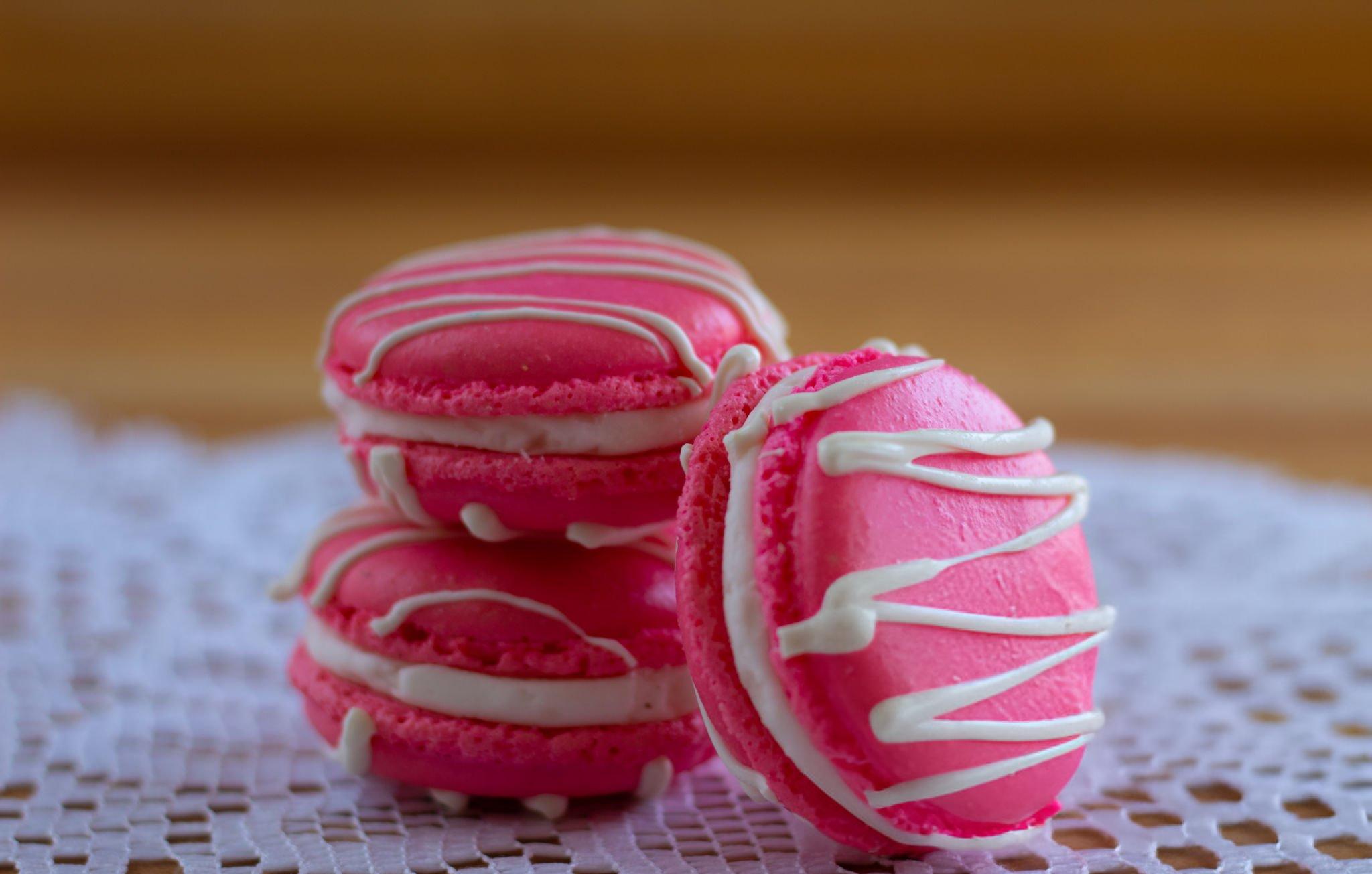
Macaron Recipe
Macarons may seem daunting to tackle, and it's true they can be tricky! But fear not, this carefully tested French macaron recipe breaks down the process into manageable steps, helping you create flawless macarons at home. From mastering the macaronage technique to piping uniform shells, a little patience and precision will have you perfecting these elegant treats in no time!
Print
Pin
Servings: 16 Macrons
Ingredients
Macaron Shells
- 1½ cups 140 g almond flour
- 1 cup 120 g powdered sugar (icing/confectioners' sugar)
- ½ cup 100 g white granulated sugar
- 3 large 100 g egg whites, at room temperature
- ¼ tsp salt
- ½ tsp vanilla extract or essence
- A few drops of gel-based food coloring optional – avoid liquid colors
Buttercream Filling
- ¾ cup 170 g unsalted butter, softened to room temperature
- 1½ cups 187 g powdered sugar
- ¼ cup 60 g heavy or whipping cream, at room temperature
- 1 tsp vanilla extract or essence
Instructions
Macaron Shells
- Begin by preparing two large baking sheets with parchment paper. Use trays with low edges for even heat distribution. For beginners, macaron templates can help achieve uniformity. Place your template under the parchment and set the trays aside.
- Separate the egg whites carefully, ensuring no yolk contaminates them. Weigh precisely 100 g of egg whites and keep them ready.
- Combine the almond flour and powdered sugar in a food processor. Pulse for 5 seconds, stir the mixture, and pulse again for another 5 seconds to ensure a fine texture. Be cautious not to over-process, as it may release oil from the almonds. Sift the mixture into a bowl, discarding any coarse particles. If a significant amount is discarded, add a touch more almond flour to compensate.
- For the meringue, place egg whites and salt in a large mixing bowl. Using a hand or stand mixer with a whisk attachment, beat on medium speed until the mixture becomes frothy, approximately 30 seconds. Gradually add the granulated sugar while mixing. Continue whipping until the meringue forms stiff, glossy peaks that stand upright without folding.
- Incorporate the vanilla extract and food coloring into the meringue, mixing on low speed until evenly distributed.
- To perform the macaronage, add half the dry ingredients to the meringue. Using a spatula, fold gently in a "J" motion, sweeping around the bowl's edges and cutting through the center. Once partially incorporated, add the remaining dry ingredients and continue folding. Press the batter gently against the bowl’s sides to eliminate air bubbles. The batter is ready when it flows in a continuous ribbon and forms a figure 8 without breaking. Test frequently to avoid overmixing.
- Transfer the batter to a piping bag fitted with a round tip (1A recommended). Pipe the batter vertically onto the parchment-lined trays, leaving space between the shells as they will spread slightly. Remove the templates and gently drop the trays on a counter to release air bubbles. Pop any remaining bubbles with a toothpick. The shell surfaces should appear smooth.
- Allow the shells to rest for 30-60 minutes or until a skin forms. The surface should feel dry to the touch. In humid conditions, this step may take up to 2 hours. Preheat your oven to 150°C (300°F) about 20 minutes into the drying time.
- Bake one tray at a time on the middle rack for 18-22 minutes. Test doneness by gently touching the tops; the shells should not wobble. Begin checking at the 18-minute mark and adjust as necessary to avoid overbaking.
- Cool the shells completely before carefully removing them from the parchment. Properly baked shells will release easily with minimal residue left behind.
- Pair the shells by size. Pipe the filling onto one shell, leaving a slight border, and gently press another shell on top until the filling spreads to the edges.
- Store macarons in an airtight container in the refrigerator for 24-48 hours to mature. Bring to room temperature before serving for the best texture and flavor.
Buttercream Filling
- In a mixing bowl, combine all the filling ingredients. Start mixing on low speed until everything comes together. Increase the speed to medium-high and whip for 10 minutes. Scrape down the sides of the bowl halfway through to ensure a smooth, fluffy buttercream. The filling is now ready to use.